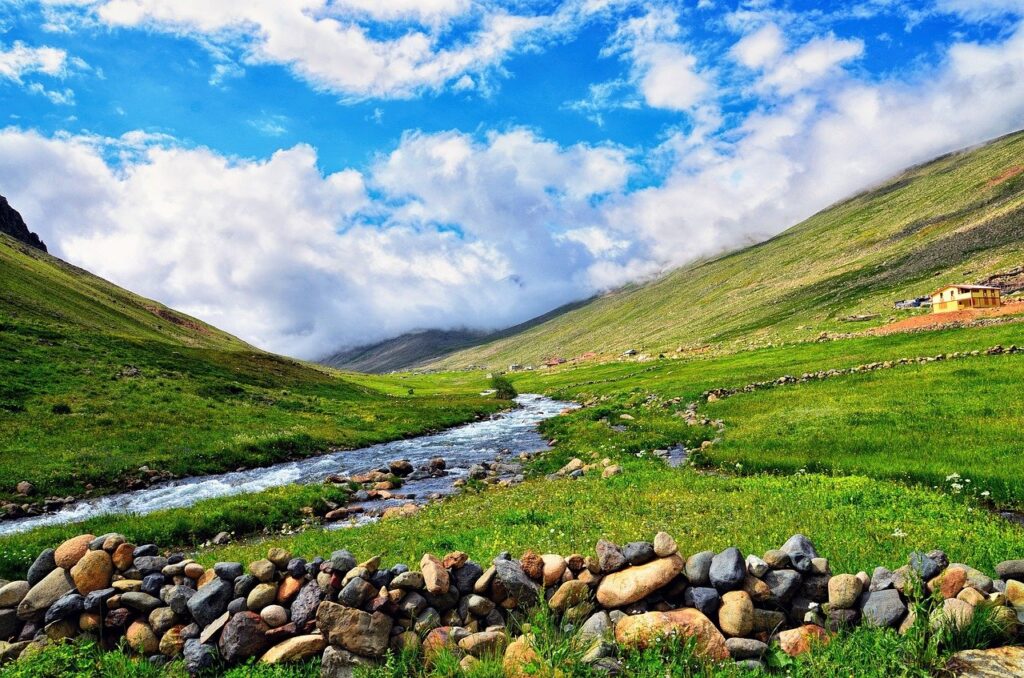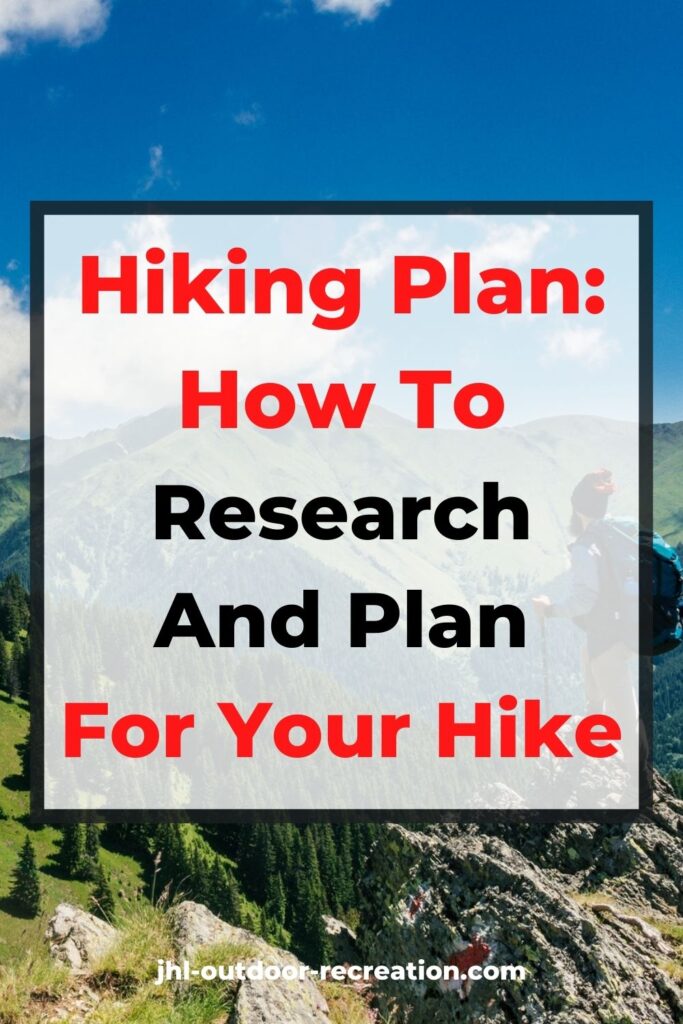Do you always create a hiking plan? Or, are you that kind of hiker like the scenario below……
Weekend. Wake up in the morning. Nothing to do. Looking at the sky through the window. – What a wonderful day!
“I’m not gonna waste the wonderful day and I wanna enjoy it to the max!”
While thinking what you’re gonna do that day, you suddenly have a thought. “Why not go for a hike?”
Yeah, without any hesitation, you drive your car and you are ready to go for THAT hike……
It’s not a debate on IMPROMPTU hike. But, a hike without a plan makes a hiker under-prepared and unprepared for uncertainties. – A proper hiking plan is all we, hikers, need.
How do we create a proper hiking plan? – Let’s work BACKWARD.
To have a hiking plan, we have to plan properly. To plan properly, we need to do proper research. To do proper research, we need to know what we need to research. To know what we need to research……
Today, I’m gonna share with you how to have a proper hiking plan for your hike, so that you are well prepared to enhance your hiking experience.
1. When should I research for my hiking plan?
There is no direction answer for this. – Meaning, it depends.
In fact, before we ask ourselves this question, let’s ask “what kind of hike do I want?” – “Do I want a day hike or backpacking?”
You are aware of the longer the hike, the more you need to prepare. Thus, the earlier you need to research and plan.
For example, if you are exploring a new day hike, you can start to do your research a week before your hike, perhaps.
Or, if you are planning for a backpacking hike, one week is definitely not enough for you. In fact, you may need a few months or even a year to research and plan for your backpacking hike. – Talk about the time commitment and budget on your backpacking.
The suggested time, however, is just for reference purpose and it may differ accordingly to individual purpose.
2. How to do hiking research?
Fortunately, doing research is very convenient. There are 4 ways which you could gather relevant information for you hiking plan.
2.1 Blog posts / Youtube videos

Thanks to the advancement of the internet, many hikers share their hiking experience through blog posts or Youtube videos.
Press the keyword and hit “enter”, there you go on the TONNES of relevant information on the hike that you want! You’ll find that the level of information is quite comprehensive.
I used this most of the time for my planning on my hike. – It’s really THAT simple!
2.2 Forest authority website or call
Sometimes, you may not be able to find some specific information, rules and regulations for instance, from the blog posts or Youtube videos. In this case, you can refer to forest authority website or call / email to reach out the forest authority.
For example, you may need to observe “leave no trace” policy and failing to comply this might lead to penalty. In this case, you can check with the forest authority for better understanding.
Furthermore, contacting forest authority is quite useful when it comes to certain specific information, eg. restriction and hiking permission, which may not be covered under blog posts or Youtube videos.
However, you need to know or check the area of authority before you reach out to them. If your reach out the incorrect forest authority, most probably you won’t get the information that you want.
2.3 Friends and community
Perhaps is the most ideal way to research on the hike that you want, because of the FIRST-HAND opinion, experience and knowledge that you get from them.
However, this isn’t ideal if you aren’t in any hiking community or you don’t have any experienced hiking buddies.
2.4 Travel brochure
This comes in very handy when you are travelling overseas. Because of the importance of promoting tourism, English version of travel brochure is easily available when you request for it.
The travel brochure contains the condensed information on the highlighted and most popular hiking trails of the country, as well as non-hiking activities, to educate and provide guidance to the foreign tourists.
So, when you reach the airport, seaport or train terminal, you can head to the tourism counter to request for the travel brochure. Or, you can get it from your travelling agency – Usually, it is free!
3. What to research for hiking plan?
It’s overwhelming because you need to know about the DETAILS of your hike and yet you don’t know what to research.
Well, you don’t have to feel overwhelm because right now, I’m gonna show you some items for your reference in your hiking plan.
3.1 Location
This represents the distance between the trail and your house. This is crucial to let you plan for your transportation and know the ESTIMATED TIME OF ARRIVAL (“ETA”).
3.2 Length
It indicates the length of the trail. This is one of the criteria to assess the time taken to complete your hike. By knowing the length of the trail, you know whether the trail FITS your hiking plan or not.
For example, if you plan for a 7-hour day hike, a trail with the length of 25km definitely is not feasible for a 7-hour day hike.
Likewise, if you plan for a 4-day backpacking hike, you won’t opt for a 10km trail, right? – It doesn’t make sense!
3.3 Steepness & Elevation

It refers to the height of the mountain and how much elevation gain for a complete hike.
Take note of the elevation gain here. Usually, people will calculate the elevation of gain by taking the peak altitude MINUS the trailhead altitude.
While it is an easy ESTIMATION on the elevation gain, you need to determine the ACTUAL elevation gain of the hike, if possible. – This is because the trails may be undulating, and the undulation should be counted when determining the actual elevation gain.
Usually, the greater the steepness or the actual elevation gain, the higher the difficulty of the hike.
And, this is a good way to assess the difficulty with your fitness level. – You can opt for a lower or higher difficulty by comparing it with your fitness level.
3.4 Trail condition
There are several factors to identify the condition of the trail.
Factor 1: Is the trail smooth?
Don’t expect the difficulty level of a smooth trail is the same as a rocky or muddy trail. It is much tougher to hike on a rocky, slippery, or muddy trail than a smooth trail.
Or, some trails require hiker to cross the river or overcome some obstacles, rock climbing or caving for instance, and hikers may need rock climbing skill in this case.
This is one of the factor to assess the difficulty of the hike and may be important as part of your hiking plan.
Factor 2: Is the trail straight forward?
Or, are there a lot of junctions along the trail? Are there proper trail markers along the trail?
Do note that if there are a lot of junctions without proper trail markets, these definitely confuse the hikers and may cause them deviate from the trail and even getting lost in the forest.
So, you may avoid solo hiking in this kind of trail.
Factor 3: Is water facility available along the trail?
If yes, then you might choose to refill your water bottle / hydration bag so you can bring less water to your hike accordingly.
Factor 4: What kind of public facility available at the trailhead?
Are there enough parking spaces at the trailhead? You need to consider this factor whether you should come by driving or having a carpool, or taking public transport……
Or, are restrooms available at the trailhead? If the restrooms are not available, where you should go to pee before the hike so that you don’t have to desperately attend the natural call while hiking?
3.5 Weather

Check the weather of the location of your hike and see which day is suitable for hiking. Ideally you want to hike on a sunny day.
Hiking on a rainy day or under thunderstorm is never recommended because of the danger and greater hiking difficulty level.
So, get to know the weather and you may adjust your hiking plan if necessary.
Or, you can purposely hike on a rainy day. Sounds odd, but this specially trains to hike in an extreme condition if you are having some sort of competition or whatnot. – Just like those trail runners need to complete the run despite the rain.
3.6 Existence of wild animals
How do you feel when you are chilling on your hike, and you notice a mountain lion is staring at you? You don’t know what to do. – Should you run away or stay there?
We wanna adventure. But, we don’t want to risk our lives while adventuring. Meeting wild animals should be the last resort while hiking.
This incident illustrates a shocking moment when a hiker met an adult mountain lion in Utah’s Slate Canyon and he nearly got attacked by her. Fortunately, she just wanted to defend her cubs and didn’t attack the hiker.
Although we cannot totally eliminate the chance of meeting wild animals, we can minimize the chance by avoiding going to the trail with frequent appearance of wild animals.
The forest authority and hikers may share their experience and advice on this matter. Don’t ignore their advice, because the advice can save you from trouble.
3.7 Completion
Apart from the above factors for your hiking plan, you need to know the estimated time for completion.
While usually hikers may also provide the estimated time of completion, it is used for your reference only. Why? It is because their estimation is based on their fitness level and hiking pace which might be totally different from yours.
Their estimated time on completion, however, is a great starting point to estimate your own completion based on your own fitness level and pace.
Alright. So, after you have estimated your completion time, remember to SCHEDULE your time. This allows you to know the time to get ready for your hike and head to the trailhead.
Also, always remember to spare additional time for your hike. For example, you may need to block 8 hours for your 6-hour day hike. This is because you may take more than 6 hours to complete your day hike and blocking additional hour enables you to have more time to prepare for the next event after the hike.
Remember, never ever rush your hike as it totally defeats the purpose of hiking.
3.8 Popularity of the trail
Ideally, you want to hike on a popular trail. It is very spooky to hike on a less popular trail where you couldn’t find any hiker along the trail.
Hiking on a more popular trail, however, makes you feel safer because you can easily get the help from other hikers if in need. And, this is especially true for solo hikers.
3.9 Permit for hiking

Some hikes require permits to restrict the number of hikers from entering the forest / mountain in order to preserve the nature and even minimize the negative impact on the forest / mountain.
If permit is required, then you need to apply for permit. If otherwise, you can be seen as an “intruder” and may face fine if get caught!
4. Plan based on research for hiking
After you have done the long and tedious research, now it’s time to PLAN for your hike. You can refer to the following for inspiration.
4.1 Gears & equipment
Apart from the essential gears and equipment, understanding your hike also helps you plan additional gears and equipment.
For example, you’ll definitely need to bring more snacks for a 6-hour hike than a 2-hour hike. Or, if you happen to rest at waterfall which hiking, it is a good idea to bring additional clothes, in case you want to chill in the water.
Another example, some trails have water stations or rivers to let you refill water. Hence, you can bring less water for you hike.
4.2 Completion milestone for hiking plan
Sometimes, when you plan for a challenging hike, you may need to plan your milestone as well. For example, you plan to have a tough and energy-taxing hike and it takes around 12 hours to complete. So, it takes roughly 6 hours to reach the summit and another 6 hours to descent.
The first 6 hours is your milestone. If you do not manage to reach the summit within 6 hours, no matter how reluctant you are, you MUST turn back and descent. If otherwise, you risk yourself not able to finish the hike within 12 hours and increase the chance of getting stuck in the forest.
Completion milestone is even more crucial for long distance hike, such as backpacking and multiple-day trekking. This milestone allows you to monitor your actual hike with your hiking plan and do necessary adjustment, if any.
4.3 Transportation

Some of the relevant questions that you need to ask yourself:
- “how many people will join this hike?”
- “how long does it take to reach the trailhead?” – You need to estimate the time that you’re going to leave home based on the expected time to reach the trail head.
- “how do we go there?” – Car? Bike? Bus? Subway? Walking distance? The choice of course affects the time to reach the trailhead, so estimate the time to leave home accordingly.
- “if we go there by car, carpool or go there on our own?” – Are you comfortable to drive? If yes, are you able to pick up your hiking buddies or would you rather go on your own? If carpool and you are the driver, do make sure you coordinate with your hiking buddies.
- “are parking spaces available at the trailhead?” – Apparently you don’t want to drive and discover that parking spaces are not available!
4.4 Accommodation
If you have a long-distance hike, backpacking for instance, you may need camp in the forest, if staying in the Airbnb is not available. Accordingly, you bring a tent to your hike. – So, are you ready to stay overnight in the forest?
For day hike, even if you manage to finish the hike, you don’t have to rush back home because of the long distance travelling.
In this case, you can choose to plan your accommodation to stay there for a day or two to let yourself fully recover before you return. – And, the good thing is, you can treat this as a day trip to travel or explore the area!
4.5 Budget for hiking plan
Your budget surely covers gears and equipment, foods and snacks, transportation and accommodation.
While you may omit the budget for a day hike, you definitely need to plan your budget when you are having a long-distance hike.
For example, for a 6-month thru hike, you need to determine how much you need to spend for your trip. Then, you need to start saving money, and that is why you also need to start doing the research much earlier to initiate the budget planning.
After all, you don’t want to have a bad hiking experience because of insufficient budget for your hiking plan.
4.6 Permit application & guide hiring
When hiking permit is required, you need to apply for hiking permit or you may get fined / be disallowed to enter the forest if get caught.
In order to apply for permit, you need to check the forest authority website on the guidance on permit application.
Next, you need to know the following when you apply for permit:
- Whether the permit is for individual or for group
- Time taken to get the approval of the permit
- Options to make payment
- Ways to collect the permit
Or, you can even consider hiring a guide. It costs you some bucks, but at least you can hike without any concern. – You even can consult the guide on the hiking matter as well.
4.7 Hiking route customization
Do you know you don’t necessarily need to follow the standard hiking route? In fact, you can plan and customize your OWN hiking route!
There are outdoor adventure app and website available for hiking route customization. You can customize based on the difficulty and length of the trail. Also, you can choose either one-way trip or round trip.
Final thought for hiking plan
If you want an impromptu hike, that’s ok, especially for the familiar day hike. However, when you are planning to explore a NEW hike, whether is a day hike or backpacking, you definitely need to have a proper hiking plan for your adventure.
To plan for a hike, research is a MUST because it helps you understand the hike that you are gonna attempt.
If you feel that doing research and planning for your hiking plan are tedious and you are reluctant to do so, try to treat your hike as a trip. – Essentially, you are doing the same thing for your trip.
Relevant blog: 11 Basic Yet Essential Hiking Skills & Technique That You Need To Know
